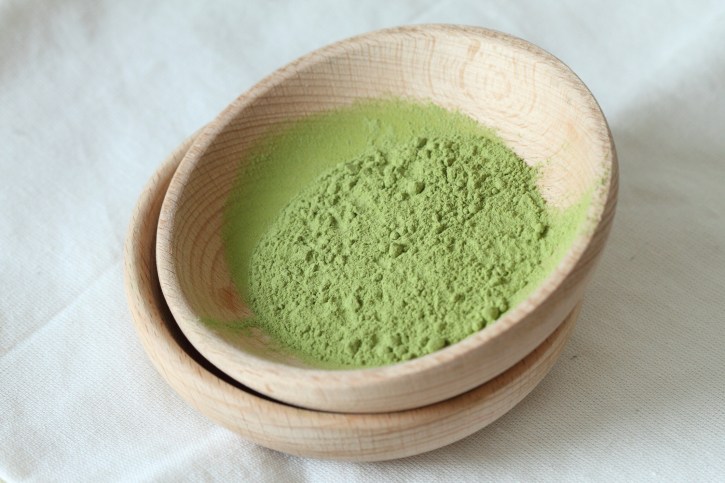7 Signs Your Eating Habits Are Too Restrictive

Let's face it: Most approaches to dieting are problematic. The dieting process often disconnects you from the internal signals that let you know when you're hungry and when you’ve had enough to eat. Diets give you a regimented eating schedule, but they don’t free you from the foods you tend to crave and overeat. Instead, they just make you become overly anxious about the calories in these foods.
Don't get me wrong — calories are important. If you reduce your caloric intake drastically, you will indeed lose weight. But this type of weight loss isn't always sustainable or healthy.
If something doesn’t appeal to you, don’t finish it.

A powerful alternative to constantly struggling with dieting is mindful eating. This means tuning in to your food's nutritional value and your body's natural signals.
To help gain freedom around your eating habits, I like to use the analogy of being on a budget. When you're following a financial budget, you don’t spend exactly the same amount every day. Occasionally you’ll splurge on something.
So how do you apply a reasonable amount of attention to your food without going too far?
Here's how to overcome seven common "calorie obsessions" using alternatives that balance mindfulness of calories with mindfulness of taste, hunger, fullness, and, yes, even joy.
1. You avoid parties because you can’t eat or drink anything that is being served.
Mindful alternative: Enjoy the party, but only nibble the foods that call out to you the most. Think of it as a taste test. If something doesn’t appeal to you, don’t finish it. If something tastes fantastic, let yourself have some more.
2. You struggle through dessert and constantly tell yourself, “I shouldn’t” but, “I want it.”
Mindful alternative: Ah, that dessert. Are you really still hungry? Is it truly very special? If so, tune into the taste — instead of the guilt — and you might find that half of it will be enough (and that way, you get to have the rest the next day!). If it's not… let it go.
3. You can’t remember a meal from the past month that you particularly enjoyed or found flavorful, but you are proud that every single one of them was high in nutrition and low in calories.
Mindful alternative: Why eat something you aren’t enjoying? Connect your desire to be healthy with a desire to please your taste buds — it's definitely possible. Experiment and explore. What tastes do you enjoy? Seasonings?
How about dipping those raw vegetables in some guacamole or hummus instead of eating them plain? Maybe just a hint of brown sugar is what you need to make those slow-cooked oats more palatable. Just a small amount of richness or sweetness often goes a long way toward making a meal more pleasurable.
4. You constantly eat celery (or carrot sticks) because your diet has you feeling hungry all the time.
Mindful alternative: This is not a balanced diet, and it's certainly not one you can sustain in the long run. Instead of cutting major food groups out of your diet, try to find ways to cut out about 500 calories or so from your usual eating patterns. I call this the 500-Calorie Challenge. It may sound like a lot, but think of it in terms of 100 calories at five times during the day: each meal, and a couple of snacks. Weight will come off gradually with this more sustainable approach, but it will probably stay off longer.
5. You are afraid to eat out at most restaurants.
Mindful alternative: Restaurant meals can feel intimidating, but remember that you don’t have to clear your plate. Portion sizes are often massive, so cultivate mindful eating and feel free to wrap up and take home what's left over.
Just a small amount of richness or sweetness often goes a long way toward making a meal more pleasurable.

6. You force yourself to order the dish on the menu that has the lowest calorie count, even if you know you won't enjoy it.
Mindful alternative: Those calorie labels are meant to be helpful, not provoke anxiety. Yes, a meal might be more than 1,000 calories, but that doesn’t make it permanently off limits. Remember, you can always consume half of it and wrap the rest up to enjoy again later.
7. You force yourself to use skim milk in your coffee, just to save 10 or 20 calories.
Mindful alternative: This is where mindfulness can really help. There are 90 calories in a cup of skim milk, 100 in a cup of 1 percent and 120 in a cup of 2 percent. The difference in calories between these are negligible, so do a taste test. Have a small amount of all three, and choose whichever one introduces the most joy into your milk-drinking experience.
Obsessive calorie counting will leave you focusing on the numbers before everything else. Mindful calorie awareness is different — it’s about keeping everything in balance and allowing yourself to eat small amounts of almost any food, without the guilt and regret.
To free yourself from obsessive dieting and move into a more flexible, balanced relationship with your eating, pick up my new book The Joy of Half a Cookie: Using Mindfulness to Lose Weight and End the Struggle with Food, available where books are sold.
Related reads:
- 10 Ways To Beat Chocolate Cravings (Yes, Really)
- 6 Steps To Intuitive, Mindful Eating
- 10 Reasons Why I Stopped Counting Calories
Photo Credit: Stocksy
-
Walking The Weight Off
Why not start walking your weight off?The utmost battle for any workin
-
Hoodia Gordonii Diet Pills: Natural Way to Lose Weight
The San tribe of the Kalahari Desert for centuries has been using
-
Panic Away: Forget The Hypnosis
The vast majority of individuals that suffer from Panic or Anxiety
-
Add High Water Content Fruits And Vegetables To Your Diet For Fast Weight Loss
Include in your diet things that contain more water like tomatoes and
-
Lose Weight The Natural Way
This article on weight loss has been wri
-
How To Lose Cankles | Learn The Secret
If you have the kind of unshapely ankles
- DON'T MISS
- Scientific Research Shows Why Diets Dont Work If You Want To Sustain Long Term Weight Loss
- 5 Surprising Reasons You're Not Losing Weight
- Succeed At Shedding Those Extra Pounds With These Helpful Weight Loss Tips!
- Weight Loss – Hair Loss – Is There a Link Between Weight Loss and Hair Loss
- How To Get Rid Of Undesirable Deposits Of Excess Body Fat
- Strategic Weight Loss
- The Importance of Paying Attention to Ulcer Symptoms
- Can Overweight Kids Develop Asthma?
- Winning Weight Loss for Life: With Answers Come Solutions
- 7 Superfoods Your Body Needs & Their Superpowers




